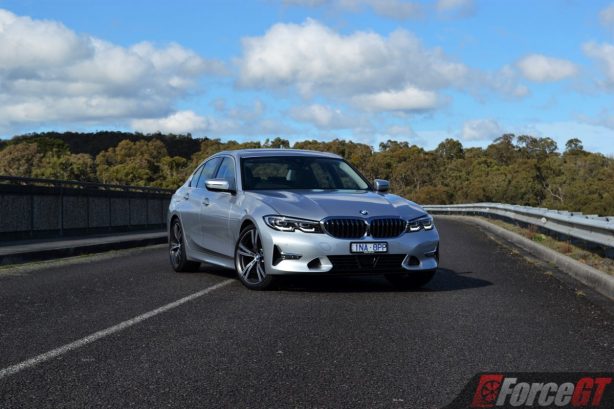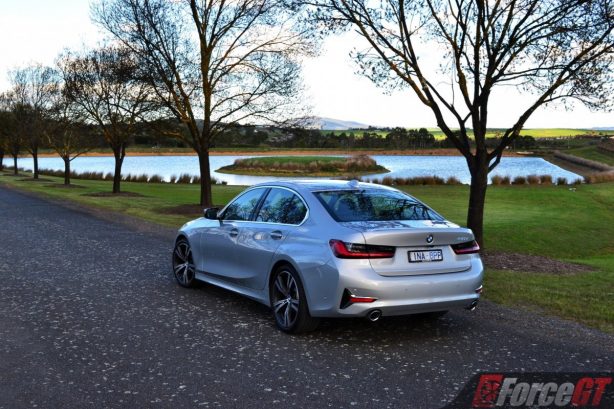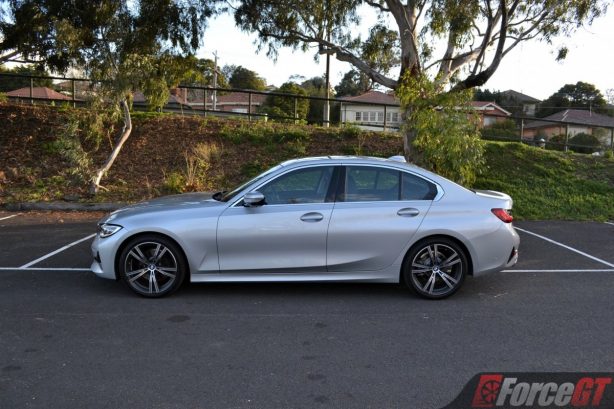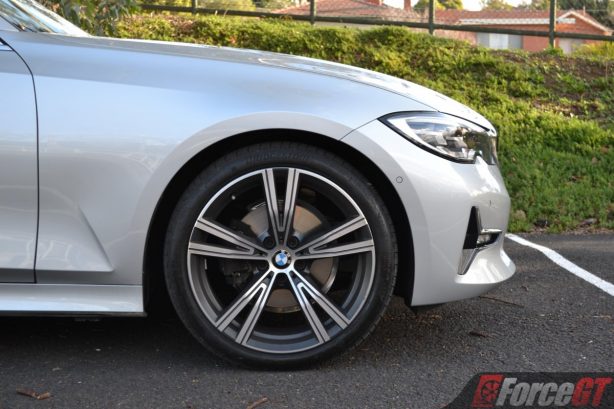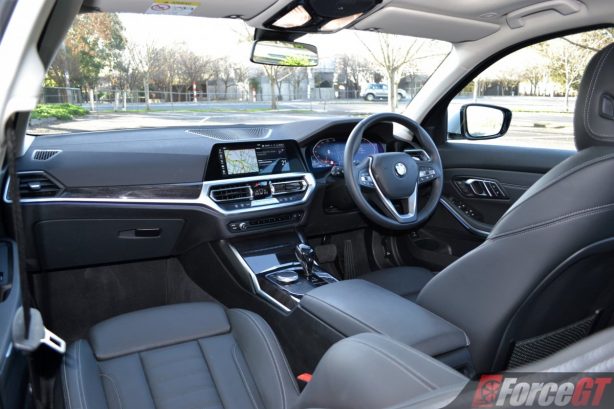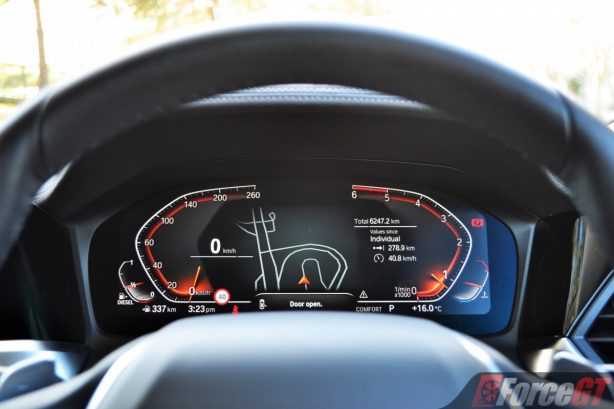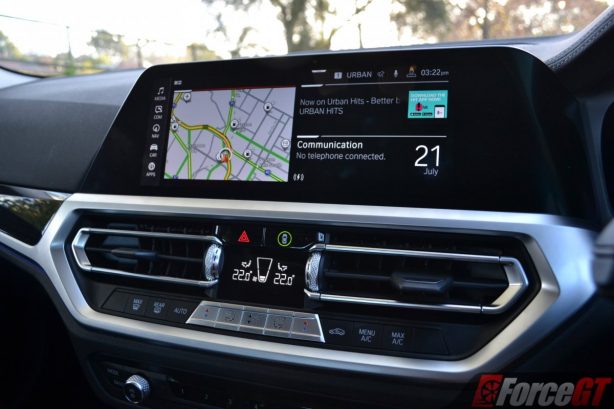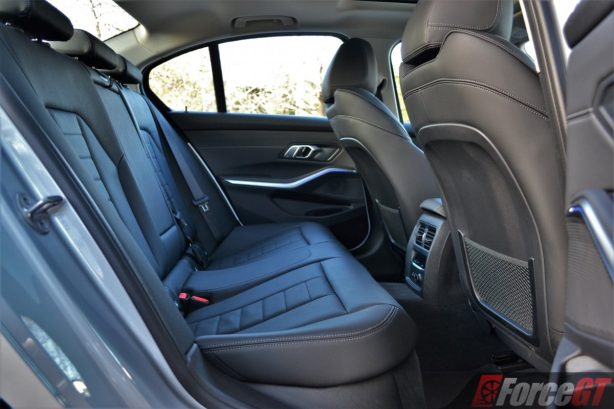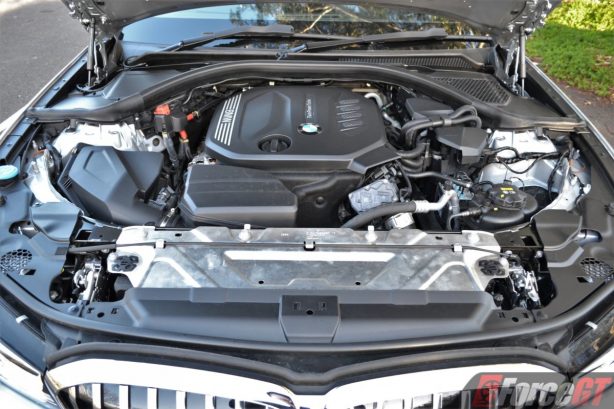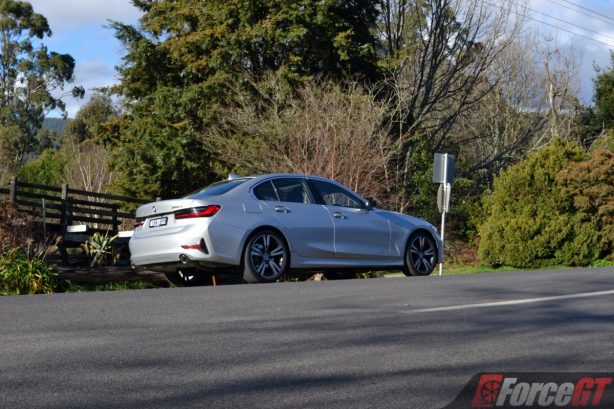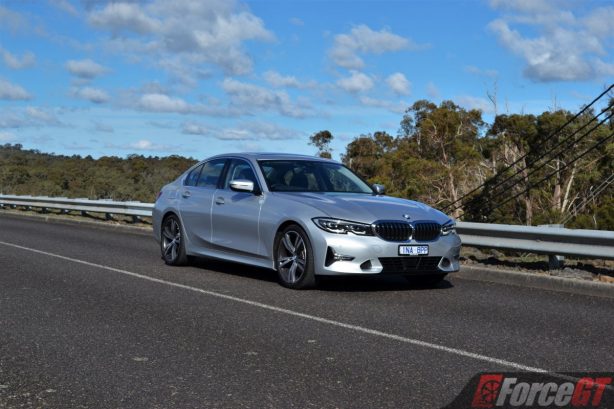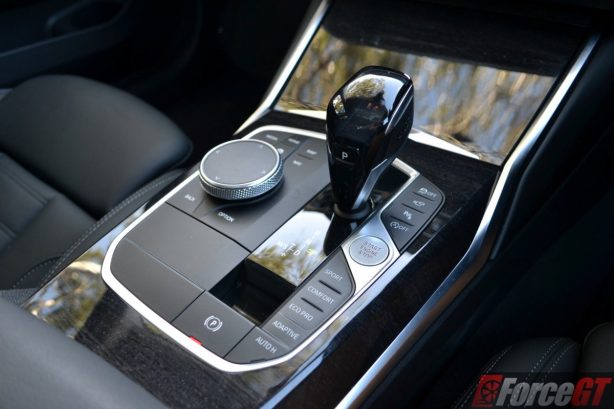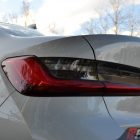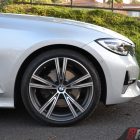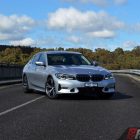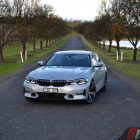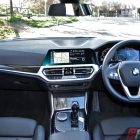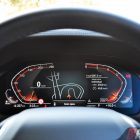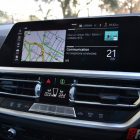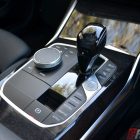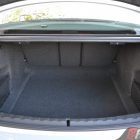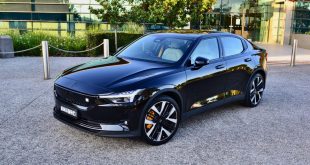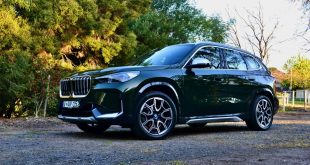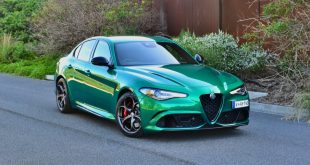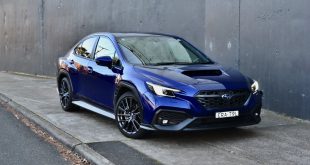Think luxury sports sedan and the BMW 3 Series immediately springs to mind. Since its inception in 1975, the 3 Series has been often regarded as the de facto rear-wheel drive, driver-focused compact executive saloon. It is the German marque’s best-selling model, accounting for nearly one-third of the brand’s annual total sales worldwide.
But the segment has changed dramatically over the last several decades and buyers are now spoilt for choice. If you have considered a 3 Series, chances are you have also looked at the Mercedes-Benz C-Class and Audi A4 – two fellow German rivals sprouted in the 90s to take on the 3 in its own game. Looking further out into the segment there are also the Lexus IS, Jaguar XE, Volvo S60 and Alfa Romeo Giulia. And the party has just been joined by yet another player – newcomer Genesis G70.
Does BMW’s most important model still have the magic to capture keen drivers in a much-changed segment? We spent a week with the BMW 320d Luxury Line to find out.
Range and pricing
The 3 Series range encompasses five variants kicking off with the popular 320i at $64,900. Our 320d tester comes in next and is the sole diesel offering priced at $67,900. The mid tier is made up of the 330i at $70,900 and 330e plug-in hybrid at $75,900. At the top of the range, the M340i xDrive brings all-wheel drive and a stonking turbo 3.0-litre at $99,900. All prices exclude on-road costs.
And of course, there’s still a spot left for the bahn-storming M3 slated for release in 2020.
On the outside
It has always been a case of evolution for each generation of the 3 Series. And this latest seventh-generation model is no exception. There may be some sharpening of the lines and edges, a widening of the BMW kidney grille, a tweak of the headlamps and taillights, and a redesign of the bumpers and wheels, but it’s still unmistakably a 3 Series. That means a low nose, high waist and short overhangs harmoniously fused together in near perfect proportions. The shape also clearly gives away one thing – its rear-wheel drive underpinnings.
Like all generations before it, the new G20 3 Series is one handsome looking machine, but some (myself included) may find the disappearance of the 3 Series trademark shoulder line on the new model a bit hard to digest. The shoulder line has been around since the very first 3 Series right up to the previous model and is a deep crease that stretches nearly the entire side profile and cuts across the door handles.
BMW has replaced this iconic design feature with two less pronounced lines – a longer line that starts from the front wheel arch to the rear quarter panel, and a second shorter line that sweeps forward from the taillights, cutting across the rear door handle and stops just before the front door.
Nevertheless, it all looks very modern and sophisticated, yet sporty and powerful – exactly what buyers are after in this segment.
All new 3 Series’ sold in Australia come standard with the M Sport package, with the less overt Luxury Line seen here available as a no-cost option. It rolls on 19-inch wheels and has a more refined front and rear bumper design for a more elegant look.
LED lights are standard fair on all exterior illumination, including cornering lights, daytime running lights and fog lights.
On the inside
We spoke, owners feedbacked, BMW heeded. Finally, the designers have given the 3 Series interior the glamour that it deserves. In the last two generations, rivals have edged the BMW in interior presentation with more generous use of premium trim and ornamentation. The mood inside a 3 Series was somber in comparison to a C-Class or A4. Not in this new one.
The ambience inside the new cabin is uplifting, welcoming and expensive. The lashings of bright aluminium inserts on the dashboard, centre console and door cards add a touch of sparkle to the otherwise monotone interior, while the subtle application of gloss black trim in the midst of things further give a layer of finesse.
Despite the glitter BMW has not forgotten its principles. The driver-centric dashboard accentuates the 3 Series’ driving focused intend and the straightforward layout means ergonomics are top notch and clutter is kept at a minimum.
Our Luxury Line features Vernasca leather upholstery, ash grey-brown wood trim, ‘Sensatec’ leatherette dashboard trim and sports front seats with heating, all impeccably put together with typical BMW precision and rigour.
In terms of technology, the main drawcard is none other than the new 12.3-inch digital instrument cluster nestled right in front of the driver. Unlike previous systems, this is fully digital and takes up the entire instrumentation binnacle, much like Audi’s Virtual Cockpit. While the quirky C-shaped dials are a major departure from the classic round analogue gauges that we have been so used to seeing from BMW, the graphics are ultra sharp and modern. Its colours and design can change according to the driving modes, and a map can be displayed between the dials though unlike rival systems there’s no ability to switch to full map view.
Higher up ahead is the head up display (HUD) which not only is a big improvement over the old version but also the best in class. Significantly larger than rivals’ systems, the projected image includes not just the usual speed and driving assist info but also the full map with animated navigation instructions. Very cool.
Perched up high in the centre of the dashboard is the new 10.25-inch infotainment display with BMW’s latest iDrive 7.0 interface. While the iDrive rotary controller is still present in the centre console the display can now also be operated by touch. Yep, it is a touchscreen and supports smartphone-like swipe, scroll, pinch and spread gestures. It features sat nav, Wifi, Bluetooth, digital radio and Apple CarPlay and Android Auto smartphone mirroring.
The new infotainment interface has been restructured so it will take sometime to get used to for those familiar with the previous version, but it’s fairly straightforward once you get the hang of it, and is as excellent as ever. There’s no shortage of customisation of the home screen and accessing shortcuts and slide out menus has never been easier with touch. The screen is super responsive which makes it all the more enjoyable to use.
A new feature is the ‘hey BMW’ virtual assistant which allows natural speech voice command without pressing a button. The feature works well for important functions such as address input and audio controls, but a little pointless when it flashes some dashboard lights and plays noisy music when you tell it you’re tired. Isn’t a direction to the nearest rest house or convenient store a more useful response?
BMW’s gesture control has also found its way into the 3 series but it wasn’t optioned up in our tester. Essentially, this feature allows hand movement in front of the touchscreen: a side way flip of hand to dismiss notification, circular motion of the index finger to adjust volume and two fingers for pause for examples.
Perhaps what’s truly useful in the rear world is the segment-first Reversing Assistant. When travelling forward at speeds of up to 36km/h, the car records the last 50m of steering movement and braking inputs. Then when the car is put in reverse and the feature activated, the car will automatically reverse along the exact same line as it has taken when moving forward in the last 50m. All the driver has to do is brake or accelerate. This feature will be useful in situations where you have driven into a narrow dead end or driveway and need to back out.
A longer wheelbase (+41mm) has contributed to a larger cabin space, especially the rear legroom. The space back there is now approaching that in older generations 5 Series, which is supposedly one size up.
Due to the lack of a spare wheel (the 3 rolls on run-flat tyres), the boot space is a sizable 480 litres, expandable by folding the 40/20/40 split rear seat.
Under the skin
The 320d is motivated by a 2.0-litre twin-turbo four-cylinder diesel engine that develops 140kW at 4000rpm and 400Nm of torque from 1750-2500rpm. Driving the rear wheels through an 8-speed torque converter automatic, the new diesel offers good response with little lag and is capable of launching the car from 0 to 100km/h in a claimed 6.8 seconds, quicker than both the Audi A4 40 TDI and Mercedes C220 d.
It’s generally quiet and smooth, from the inside at least, only becoming vocal when extended. On the move it’s almost as refined as any petrol unit, while on the freeway it’s completely hushed and you’d be hard pressed to tell it’s a diesel.
The 320d is fitted with auto idle stop/start that shuts down the engine when the vehicle comes to a temporary stop. We find the system not as pedal adjustable as we’d like, as even the slightest application of the brake will activate engine cut off when coming to a halt, which can be annoying when you are just trying to inch forward in traffic. However, the system is quick to fire up the moment the brake pedal is released for a smooth takeoff. It can also be turned off if you so desired.
The automatic gearbox the engine is hooked up to is smooth and makes the best use of the available torque from the engine, though in spirited driving the shifts are inherently less snappy than that of a dual-clutch box.
On the road
There used to be a time when the 3 Series was the class benchmark for driving dynamics. But that has blurred in recent times with the superb Jaguar XE and Alfa Romeo Giulia coming into the scene. Can the BMW standout once again as the king of dynamics? The M Sport model will certainly offer a sportier drive but even the Luxury Line spec is pretty impressive.
Almost straightaway you’re reminded of the BMW hallmarks. Agility, balance and poise, they’re all there in the new 3. The steering is precise, the front is locked down and the rear is taut, so you just point it into corners with full confidence. That’s driving enjoyment.
Lean harder into the bends and it remains faithfully composed with not the slightest hint of understeer. Feed in light throttle and you can even tighten its line and place the nose deeper into the apex. Then it’s time for full power and you’re out of the curve.
The 320d’s diesel isn’t the best engine for this kind of spirited driving but at least it’s muscly enough to pull you swiftly into the next bend for the fun to happen all over again.
Based on BMW’s latest CLAR platform, the new 3 Series is some 55kg lighter than before, yet 50 percent more rigid. It’s an impressive effort given the new car is larger than its predecessor.
But there’s still room for improvement. The steering isn’t the most communicative and the ride over large corrugations isn’t as relaxed as we’d hoped. That said, on the freeway quietness and refinement are first rate.
In the long run
Unlike most manufacturers, BMW offers condition-based servicing for its vehicles. Rather than having a set servicing schedule based on distance or time interval, the 3 Series’ servicing is determined based on how the car is driven. This means servicing is more frequent if the car is often used for short distance travel or in extreme cold condition, or less frequent otherwise.
The BMW Service Inclusive Basic package covers your scheduled servicing needs for 5 years or 80,000 km, whichever comes first. With packages starting from $1,565, the Basic package includes your annual vehicle checks, oil changes, all filters, spark plugs and labour costs for the duration of the package.
Being a diesel, the 320d impresses with excellent fuel economy. If you’re careful with your right foot, it’s capable of over 800km on a single tank (40 litres). Over our week-long test, we averaged 6.0L/100km on the trip computer, not far off the rated figure of 4.5L/100km.
Verdict
Design & Comfort
Performance & Handling
Quality
Economy
Equipment & Features
OUR SCORE
4.1/5
+ Plus
- Handsome looks
- Refined diesel engine
- Impressive ride and handling balance
- Excellent fuel economy
– Minus
- Questionable virtual assistant
- Slightly vague steering
- Expensive options
Overall
As BMW’s core model, the new 3 Series has been given the focus that it deserves in this latest iteration. And that’s a bloody good thing given company’s recent SUV obsession and electrification push.
The new 3 is an improvement over the previous model in virtually all areas. The interior is a dramatic step up, the tech is impressive though not exactly redefining, and most importantly the handling is tighter than ever.
The 3 is once again the driver’s car and the 320d Luxury Line tested here throws in excellent economy for good measure.
2019 BMW 320d Pricing and Specification
| Price (Excl. on-road costs): | From: $67,900 |
| Warranty: | 3 years/Unlimited kilometers |
| Country of Origin: | Germany |
| Service Intervals: | Variable |
| Engine: | 2.0-litre four-cylinder turbocharged diesel: 140kW @ 4000rpm, 400Nm @ 1750-2500rpm |
| Transmission: | 8-speed automatic |
| Drivetrain: | Rear-wheel drive |
| Power to Weight Ratio (W/kg): | 97.9 |
| Combined Fuel Consumption (L/100km): | Claimed: 4.5 / Tested: 6.0 |
| RON Rating: | N/A |
| Fuel Capacity (L): | 40 |
| Body: | 4-door sedan, 5 seats |
| Safety: | 5-star ANCAP, 7 Airbags, Parking Assistant Plus incl. Surround View, Tyre Pressure Sensor, Emergency Stop Signal, Hill Descent Control (HDC), ABS, BA, TCS, EBD |
| Dimensions (L/W/H/W-B) mm: | 4709/1827/1435/2851 |
| Tare Mass (kg): | 1,430 |
| Towing Capacity (kg): | Braked: 1,600kg / Unbraked: 700kg |
| Entertainment: | Navigation system Professional with 10.25-inch colour touch display, 10-speakers, Bluetooth/USB, Apple CarPlay, Android Auto |
Competitors:
Mercedes-Benz C-Class, Audi A4, Jaguar XE, Alfa Romeo Giulia, Lexus IS, Genesis G60, Volvo S60, Infiniti Q50
 ForceGT.com Car News, Car Reviews, Video Reviews, Tuning and much more.
ForceGT.com Car News, Car Reviews, Video Reviews, Tuning and much more. 